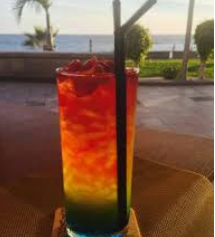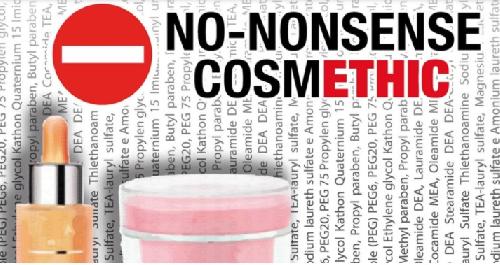Argento ed argiria
Moderatori: gigetta, Laura, tagliar, MissBarbara
Regole del forum
in questa sezione NON SI POSTANO INCI
in questa sezione NON SI POSTANO INCI
-
molotov*cocktail

- utente avanzato

- Messaggi: 211
- Iscritto il: 09/10/2009, 16:46
- Località: Torino
Argento ed argiria
Conoscete le proprietà cosmetiche dell'argento?
Mia mamma è tornata dalla Germania con un "unguento all'argento", che dovrebbe essere lenitivo e togliere i brufoli (pensate un po'....).
Ho guardato l'inci ed è denominato "silver". Ho cercato qui sul forum e mi sembra di non aver trovato nulla (ma sono prontissima alle martellate sulla testa nel caso abbia aperto un topic inutile), che mi dite?
Grazie mille in anticipo
Mia mamma è tornata dalla Germania con un "unguento all'argento", che dovrebbe essere lenitivo e togliere i brufoli (pensate un po'....).
Ho guardato l'inci ed è denominato "silver". Ho cercato qui sul forum e mi sembra di non aver trovato nulla (ma sono prontissima alle martellate sulla testa nel caso abbia aperto un topic inutile), che mi dite?
Grazie mille in anticipo
-
Laura

- moderatrice globale

- Messaggi: 12023
- Iscritto il: 07/10/2006, 16:39
-
molotov*cocktail

- utente avanzato

- Messaggi: 211
- Iscritto il: 09/10/2009, 16:46
- Località: Torino
-
nidaniela
- utente

- Messaggi: 20
- Iscritto il: 25/01/2010, 7:54
Sul sito di Paula Begoun riporta:
" Silver: Elemento metallico che in cosmetica può avere proprietà disinfettanti; il contatto prolungato può dare alla pelle un colore grigio-bluastro. Il silver può essere irritante e può essere tossico. (Fonti: Annals of Dermatology and Venereology, February 2002, pages 217–219; and Critical Reviews in Toxicology, May 1996, pages 255–260) "
" Silver: Elemento metallico che in cosmetica può avere proprietà disinfettanti; il contatto prolungato può dare alla pelle un colore grigio-bluastro. Il silver può essere irritante e può essere tossico. (Fonti: Annals of Dermatology and Venereology, February 2002, pages 217–219; and Critical Reviews in Toxicology, May 1996, pages 255–260) "
-
molotov*cocktail

- utente avanzato

- Messaggi: 211
- Iscritto il: 09/10/2009, 16:46
- Località: Torino
-
paracelso

- esimio cosmetologo

- Messaggi: 688
- Iscritto il: 13/12/2006, 8:58
certamentemolotov*cocktail ha scritto:Conoscete le proprietà cosmetiche dell'argento?
L'intossicazione da argento è una delle più curiose manifestazioni cutanee... diventi proprio blu, è la "famosa" ARGIRIA.
quindi l'utilizzo dell'argento e suoi sali in cosmesi è estremamente problematico.
ovvio che a dosaggi omeopatici il rischio è limitato o praticamente nullo, ma probabilmente anche un qualunque effetto positivo sarà limitato o praticamente nullo.
visto il profilo tossicologico l'eventuale uso come conservante del cloruro di argento ( tra l'altro in una forma coated su particelle di biossido di titanio ) è ammesso , esclusi infanti , occhi e labbra, a concentrazioni massime dello 0,004%.
la forma colloidale, anche lei con una discreta azione battericida, se non ricordo male ha dosaggi di argento minimi, ma visto che poi alla fine si tratta di una dispersione elettrolitica di nanoparticelle, probabilmente deve rientrare anche nel profilo di rischio da nanoparticelle...
ultima , ma non ultima, è uno dei metalli con un rischio allergenico.
Non dico che è come il nikel, ma qualche allergia la da.
insomma per chi deve redigere un dossier di sicurezza di un cosmetico...tutto sto argento che da qualche anno sta tornando di moda, in realtà è una bella seccatura.
Paracelso -
stufo di bufale cosmetiche - http://www.nononsensecosmethic.org
stufo di bufale cosmetiche - http://www.nononsensecosmethic.org
-
molotov*cocktail

- utente avanzato

- Messaggi: 211
- Iscritto il: 09/10/2009, 16:46
- Località: Torino
-
Lola

- Grande Capa

- Messaggi: 48775
- Iscritto il: 28/09/2006, 10:47
- Località: Monfalcone
Segnalo il sito di Rosemary Jacobs: http://rosemaryjacobs.com/
Molotov cocktail butta via quella pomata.
Molotov cocktail butta via quella pomata.
...perchè io VI VEDO
"Dovrei mettere all'ingresso del forum avete presente quei metal detector tipo negli aeroporti? Quando suona, faccio lasciare giù la scatoletta di bicarbonato e faccio passare solo senza."
"Dovrei mettere all'ingresso del forum avete presente quei metal detector tipo negli aeroporti? Quando suona, faccio lasciare giù la scatoletta di bicarbonato e faccio passare solo senza."
-
Laura

- moderatrice globale

- Messaggi: 12023
- Iscritto il: 07/10/2006, 16:39
-
Lola

- Grande Capa

- Messaggi: 48775
- Iscritto il: 28/09/2006, 10:47
- Località: Monfalcone
-
molotov*cocktail

- utente avanzato

- Messaggi: 211
- Iscritto il: 09/10/2009, 16:46
- Località: Torino
Ti assicuro Lola che mi è bastato aprire quel link per farmi passare del tutto la voglia di usarla!Lola ha scritto:Segnalo il sito di Rosemary Jacobs: http://rosemaryjacobs.com/
Molotov cocktail butta via quella pomata.
Comunque devo ringraziare questo forum, perchè fino a un paio di mesi fa me la sarei spalmata senza problemi (anche perchè mia mamma me l'ha portata tutta speranzosa, perchè contiene anche ossido di zinco e ha visto quanto bene mi ha fatto la Cytelium... e deve pure averla pagata molto perchè mi chiede ogni 5 minuti se l'ho provata). Invece ho cercato tutti gli ingredienti, e, non trovando nulla sull'argento ho chiesto a voi.
Quindi grazie a tutti quelli che hanno risposto, e grazie anche a tutti quelli che di cosmesi ne sanno e condividono qui il loro sapere (oltre a chi controlla il rispetto del regolamento, perchè un forum pieno di ottime informazioni, ma di difficile consultazione, non è un buon veicolo di informazioni), è merito vostro se ho altri criteri per la scelta di un prodotto e non mi devo fidare solo del claim.
(Sembra proprio una ..., scusate non voleva esserlo)
-
Lola

- Grande Capa

- Messaggi: 48775
- Iscritto il: 28/09/2006, 10:47
- Località: Monfalcone
Chiariamo: si diventa tutti blu per assunzione interna di preparati all'argento, in caso di applicazione topica si può sviluppre argiria (notare: non tutti reagiscono allo stesso modo) limitatamente alla zona esposta alla sostanza. Ipotizzando un'applicazione entusiastica del prodotto io direi che è meglio evitarlo, c'è gente che ha svilupato argiria ai lobi delle orecchie perchè usava orecchini d'argento; noi sappiamo che è difficile che una cosa del genere succeda, ma visto che il rischio è grosso, che è un danno irreversibile, e il beneficio praticamente nullo, meglio evitare del tutto.
...perchè io VI VEDO
"Dovrei mettere all'ingresso del forum avete presente quei metal detector tipo negli aeroporti? Quando suona, faccio lasciare giù la scatoletta di bicarbonato e faccio passare solo senza."
"Dovrei mettere all'ingresso del forum avete presente quei metal detector tipo negli aeroporti? Quando suona, faccio lasciare giù la scatoletta di bicarbonato e faccio passare solo senza."
-
gusson
- utente avanzato

- Messaggi: 107
- Iscritto il: 19/08/2008, 22:23
-
Lola

- Grande Capa

- Messaggi: 48775
- Iscritto il: 28/09/2006, 10:47
- Località: Monfalcone
Ma no, sono casi davvero isolati. Poi la maggior parte dei gioielli in argento moderni hanno un trattamento che li mantiene lucidi e credo che sia una specie di copertura. Molto probabilmente ciò protegge anche la pelle.
...perchè io VI VEDO
"Dovrei mettere all'ingresso del forum avete presente quei metal detector tipo negli aeroporti? Quando suona, faccio lasciare giù la scatoletta di bicarbonato e faccio passare solo senza."
"Dovrei mettere all'ingresso del forum avete presente quei metal detector tipo negli aeroporti? Quando suona, faccio lasciare giù la scatoletta di bicarbonato e faccio passare solo senza."
-
paracelso

- esimio cosmetologo

- Messaggi: 688
- Iscritto il: 13/12/2006, 8:58
a me a volte non dispiacerebbe leggere questa fuffa internet... se non facesse dei danni e non ci fosse qualcuno che poi ci crede, in fondo sarebbe una lettura divertente ...
le multinazionali farmaceutiche cattivone che non vogliono far sapere che abbiamo la cura alternativa di tutti i mali. a portata di mano .. bha!!!
date una occhiatina alle foto di argyria in rete , ci sono anche i casi di argyria cosmetica.... auguri
per fare un po' di pulizia dalla spazzatura internet che circola sull'argento colloidale una sintesi pubblicata dal Centro nazionale per la medicina complementare e alternativa, Usa. che NB .. non sono contrari alla medicina complementare o alternativa
Colloidal silver consists of tiny silver particles suspended in liquid. Usually marketed as dietary supplements, colloidal silver products have been used for a variety of health purposes—although there is no scientific evidence to support their safety or effectiveness. This fact sheet provides a general overview of colloidal silver products and suggests sources for additional information.
Key Points
The U.S. Food and Drug Administration (FDA) does not consider colloidal silver to be safe or effective for treating any disease or condition.
The FDA and the Federal Trade Commission (FTC) have taken action against a number of colloidal silver companies (including some companies that sell products over the Internet) for making drug-like claims about their products.
Colloidal silver can cause many side effects. One example is argyria, a bluish-gray discoloration of the body, which is not treatable or reversible.
Tell all your health care providers about any complementary and alternative (CAM) practices you use. Give them a full picture of what you do to manage your health. This will help ensure coordinated and safe care.
Background
Silver is a metallic element. Its many uses include making jewelry, silverware, electronic equipment, and dental fillings; processing photographs; and disinfecting water. People are exposed to silver, usually in tiny amounts, through the air, drinking water, and food, and possibly in certain activities, such as work or hobbies.
Silver has had some medicinal uses going back for centuries. However, modern drugs have eliminated most of those uses. A few prescription drugs containing silver are still available. For example, silver nitrate can be used to prevent the eye condition conjunctivitis in newborn babies and to treat certain skin conditions, such as corns and warts. Another drug, silver sulfadiazine, can be used to treat burns. These drugs are applied to the body (i.e., they are not taken internally), and they can have negative side effects.
Colloidal silver products consist of tiny silver particles suspended in a liquid base. The products are usually taken by mouth. Other forms of colloidal silver may be sprayed, applied directly to the skin, or injected into a vein.
Marketing Claims for Colloidal Silver
Colloidal silver products are often marketed as dietary supplements with various unproven health-related claims. For example, advertisements may claim that the products benefit the immune system; kill disease-causing agents such as bacteria, viruses, and fungi; serve as an alternative to prescription antibiotics; or treat diseases such as cancer, HIV/AIDS, diabetes, tuberculosis, syphilis, scarlet fever, shingles, herpes, pneumonia, and prostatitis (inflammation of the prostate).
Scientific Evidence
Reviews of the scientific literature on colloidal silver products have concluded that:
Silver has no known function in the body
Silver is not an essential mineral supplement or a cure-all and should not be promoted as such
Claims that there can be a "deficiency" of silver in the body and that such a deficiency can lead to disease are unfounded
Claims made about the effectiveness of colloidal silver products for numerous diseases are unsupported scientifically
Colloidal silver products can have serious side effects
Laboratory analysis has shown that the amounts of silver in supplements vary greatly, which can pose risks to the consumer.
Side Effects and Risks
Animal studies have shown that silver builds up in the tissues of the body. In humans, buildup of silver from colloidal silver can lead to a side effect called argyria, which causes a bluish-gray discoloration of the skin, other organs, deep tissues, nails, and gums. Argyria is permanent and cannot be treated or reversed. Other side effects from using colloidal silver products may include neurologic problems (such as seizures), kidney damage, stomach distress, headaches, fatigue, and skin irritation. Colloidal silver may interfere with the body's absorption of some drugs, such as penacillamine, quinolones, tetracyclines, and thyroxine.
Federal Regulation
The Federal Government regulates dietary supplements (including those that contain colloidal silver) primarily through the FDA, but the laws about putting dietary supplements on the market and keeping them there are generally less strict than the laws for drugs. For example, manufacturers of dietary supplements, unlike manufacturers of drugs, do not have to prove their product's safety and effectiveness to the FDA before it is marketed. However, if the product is found to be unsafe after it is marketed, the FDA can take certain actions, such as removing it from the marketplace. (To learn more about dietary supplements and their regulation, see the National Center for Complementary and Alternative Medicine (NCCAM) fact sheet, Using Dietary Supplements Wisely.)
The FDA issued a ruling in 1999 that no products containing colloidal silver are generally recognized as safe and effective. In addition, the FDA and the FTC have sent warning letters to the operators of many Web sites that market colloidal silver with drug-like claims (i.e., claims that their products diagnose, treat, cure, or prevent disease).
If You Are Thinking About Using Colloidal Silver Products
There is a lack of evidence for effectiveness and a risk for serious side effects from colloidal silver products. The FDA does not consider colloidal silver to be safe or effective for treating any disease or condition.
Do not use any dietary supplements product that contains vitamins, minerals, herbs or other botanicals, amino acids, enzymes, and/or other ingredients intended to supplement the diet. The U.S. Food and Drug Administration has special labeling requirements for dietary supplements and treats them as foods, not drugs. as a replacement for conventional care, or as a reason to postpone seeing a doctor about a medical problem.
If you are pregnant or nursing a child, or if you are considering giving a child a dietary supplement, it is especially important to consult your health care provider. Supplements can act like drugs in the body, and many have not been tested in pregnant women, nursing mothers, or children.
Tell all your health care providers about any complementary and alternative practices you use. Give them a full picture of what you do to manage your health. This will help ensure coordinated and safe care. For tips about talking with your health care providers about CAMA group of diverse medical and health care systems, practices, and products that are not presently considered to be part of conventional medicine. Complementary medicine is used together with conventional medicine, and alternative medicine is used in place of conventional medicine., see NCCAM's Time to Talk campaign.
le multinazionali farmaceutiche cattivone che non vogliono far sapere che abbiamo la cura alternativa di tutti i mali. a portata di mano .. bha!!!
date una occhiatina alle foto di argyria in rete , ci sono anche i casi di argyria cosmetica.... auguri
per fare un po' di pulizia dalla spazzatura internet che circola sull'argento colloidale una sintesi pubblicata dal Centro nazionale per la medicina complementare e alternativa, Usa. che NB .. non sono contrari alla medicina complementare o alternativa
Colloidal silver consists of tiny silver particles suspended in liquid. Usually marketed as dietary supplements, colloidal silver products have been used for a variety of health purposes—although there is no scientific evidence to support their safety or effectiveness. This fact sheet provides a general overview of colloidal silver products and suggests sources for additional information.
Key Points
The U.S. Food and Drug Administration (FDA) does not consider colloidal silver to be safe or effective for treating any disease or condition.
The FDA and the Federal Trade Commission (FTC) have taken action against a number of colloidal silver companies (including some companies that sell products over the Internet) for making drug-like claims about their products.
Colloidal silver can cause many side effects. One example is argyria, a bluish-gray discoloration of the body, which is not treatable or reversible.
Tell all your health care providers about any complementary and alternative (CAM) practices you use. Give them a full picture of what you do to manage your health. This will help ensure coordinated and safe care.
Background
Silver is a metallic element. Its many uses include making jewelry, silverware, electronic equipment, and dental fillings; processing photographs; and disinfecting water. People are exposed to silver, usually in tiny amounts, through the air, drinking water, and food, and possibly in certain activities, such as work or hobbies.
Silver has had some medicinal uses going back for centuries. However, modern drugs have eliminated most of those uses. A few prescription drugs containing silver are still available. For example, silver nitrate can be used to prevent the eye condition conjunctivitis in newborn babies and to treat certain skin conditions, such as corns and warts. Another drug, silver sulfadiazine, can be used to treat burns. These drugs are applied to the body (i.e., they are not taken internally), and they can have negative side effects.
Colloidal silver products consist of tiny silver particles suspended in a liquid base. The products are usually taken by mouth. Other forms of colloidal silver may be sprayed, applied directly to the skin, or injected into a vein.
Marketing Claims for Colloidal Silver
Colloidal silver products are often marketed as dietary supplements with various unproven health-related claims. For example, advertisements may claim that the products benefit the immune system; kill disease-causing agents such as bacteria, viruses, and fungi; serve as an alternative to prescription antibiotics; or treat diseases such as cancer, HIV/AIDS, diabetes, tuberculosis, syphilis, scarlet fever, shingles, herpes, pneumonia, and prostatitis (inflammation of the prostate).
Scientific Evidence
Reviews of the scientific literature on colloidal silver products have concluded that:
Silver has no known function in the body
Silver is not an essential mineral supplement or a cure-all and should not be promoted as such
Claims that there can be a "deficiency" of silver in the body and that such a deficiency can lead to disease are unfounded
Claims made about the effectiveness of colloidal silver products for numerous diseases are unsupported scientifically
Colloidal silver products can have serious side effects
Laboratory analysis has shown that the amounts of silver in supplements vary greatly, which can pose risks to the consumer.
Side Effects and Risks
Animal studies have shown that silver builds up in the tissues of the body. In humans, buildup of silver from colloidal silver can lead to a side effect called argyria, which causes a bluish-gray discoloration of the skin, other organs, deep tissues, nails, and gums. Argyria is permanent and cannot be treated or reversed. Other side effects from using colloidal silver products may include neurologic problems (such as seizures), kidney damage, stomach distress, headaches, fatigue, and skin irritation. Colloidal silver may interfere with the body's absorption of some drugs, such as penacillamine, quinolones, tetracyclines, and thyroxine.
Federal Regulation
The Federal Government regulates dietary supplements (including those that contain colloidal silver) primarily through the FDA, but the laws about putting dietary supplements on the market and keeping them there are generally less strict than the laws for drugs. For example, manufacturers of dietary supplements, unlike manufacturers of drugs, do not have to prove their product's safety and effectiveness to the FDA before it is marketed. However, if the product is found to be unsafe after it is marketed, the FDA can take certain actions, such as removing it from the marketplace. (To learn more about dietary supplements and their regulation, see the National Center for Complementary and Alternative Medicine (NCCAM) fact sheet, Using Dietary Supplements Wisely.)
The FDA issued a ruling in 1999 that no products containing colloidal silver are generally recognized as safe and effective. In addition, the FDA and the FTC have sent warning letters to the operators of many Web sites that market colloidal silver with drug-like claims (i.e., claims that their products diagnose, treat, cure, or prevent disease).
If You Are Thinking About Using Colloidal Silver Products
There is a lack of evidence for effectiveness and a risk for serious side effects from colloidal silver products. The FDA does not consider colloidal silver to be safe or effective for treating any disease or condition.
Do not use any dietary supplements product that contains vitamins, minerals, herbs or other botanicals, amino acids, enzymes, and/or other ingredients intended to supplement the diet. The U.S. Food and Drug Administration has special labeling requirements for dietary supplements and treats them as foods, not drugs. as a replacement for conventional care, or as a reason to postpone seeing a doctor about a medical problem.
If you are pregnant or nursing a child, or if you are considering giving a child a dietary supplement, it is especially important to consult your health care provider. Supplements can act like drugs in the body, and many have not been tested in pregnant women, nursing mothers, or children.
Tell all your health care providers about any complementary and alternative practices you use. Give them a full picture of what you do to manage your health. This will help ensure coordinated and safe care. For tips about talking with your health care providers about CAMA group of diverse medical and health care systems, practices, and products that are not presently considered to be part of conventional medicine. Complementary medicine is used together with conventional medicine, and alternative medicine is used in place of conventional medicine., see NCCAM's Time to Talk campaign.
Paracelso -
stufo di bufale cosmetiche - http://www.nononsensecosmethic.org
stufo di bufale cosmetiche - http://www.nononsensecosmethic.org
-
Serena

- utente avanzato

- Messaggi: 8451
- Iscritto il: 12/11/2006, 18:07
- Località: Trieste
...paracelso ha scritto:a me a volte non dispiacerebbe leggere questa fuffa internet... se non facesse dei danni e non ci fosse qualcuno che poi ci crede, in fondo sarebbe una lettura divertente ...
le multinazionali farmaceutiche cattivone che non vogliono far sapere che abbiamo la cura alternativa di tutti i mali. a portata di mano .. bha!!!
date una occhiatina alle foto di argyria in rete , ci sono anche i casi di argyria cosmetica.... auguri
Per inciso: è un Paracelso a togliermi i dubbi (a ME, che in materia sono ignorante come pochi) su come funziona un determinato elemento, non un Wanno Marchi qualunque che arriva, non si sa chi è né che titoli abbia, tira fuori un pistolotto completamente campato in aria e pretende di "aver sciolto le riserve". Vorrei avere un decimo della sua faccia tosta, sarei già diventata un dirigente della società per cui lavoro.
-
Kalopsa
- utente avanzato

- Messaggi: 294
- Iscritto il: 07/09/2010, 23:36
Oh! Allora i Puffi esistono davvero!Lola ha scritto:Chiariamo: si diventa tutti blu per assunzione interna di preparati all'argento, in caso di applicazione topica si può sviluppre argiria (notare: non tutti reagiscono allo stesso modo) limitatamente alla zona esposta alla sostanza.
Tornando seri..
...si chiama rodiatura (da Rodio, il metallo usato che è della famiglia del platino e che ha pezzi che vanno sui 62-65 Eur/g contro i 32-34 dell'oro e il 40-42 del platino stesso) ed è la stessa operazione effettuata sull'oro bianco che, da quando è stato accantonato l'uso del nichel, è meno 'bianco' di prima. Quindi, per farlo ri-apparire bianco, viene appunto rodiato per galvanizzazione.Lola ha scritto:Ma no, sono casi davvero isolati. Poi la maggior parte dei gioielli in argento moderni hanno un trattamento che li mantiene lucidi e credo che sia una specie di copertura. Molto probabilmente ciò protegge anche la pelle.



